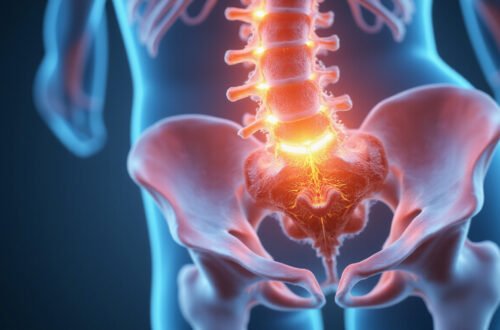Nerve impingement relief is a critical concern for many individuals suffering from pain, tingling, or numbness caused by compressed nerves. Whether the cause is a herniated disc, repetitive strain, or spinal stenosis, finding effective solutions to alleviate nerve impingement can significantly improve quality of life. This article explores practical and lasting strategies for nerve impingement relief, emphasizing approaches that promote healing and comfort.
Understanding Nerve Impingement and Its Symptoms
Nerve impingement occurs when surrounding tissues—such as bones, muscles, or tendons—apply pressure on a nerve. This pressure can disrupt nerve signaling, leading to symptoms like:
- Sharp or burning pain
- Numbness or tingling sensations
- Muscle weakness
- Reduced reflexes
- Radiating pain along the nerve’s pathway
Common sites for nerve impingement include the neck (cervical radiculopathy), lower back (lumbar radiculopathy), and wrists (carpal tunnel syndrome). Early identification and treatment are essential for effective nerve impingement relief.
Top Strategies for Nerve Impingement Relief
Finding the right combination of treatments tailored to your specific condition is key. Here are some of the most effective strategies for lasting nerve impingement relief.
1. Physical Therapy and Targeted Exercises
Physical therapy is often one of the first recommendations for nerve impingement relief. A skilled therapist can design exercises that:
- Strengthen supporting muscles to reduce nerve pressure
- Improve flexibility to alleviate tension around the nerve
- Correct posture and body mechanics to prevent recurrence
For example, for a pinched nerve in the neck, cervical traction and nerve gliding exercises may be prescribed to gently relieve pressure and promote nerve mobility.
2. Ergonomic Adjustments
Poor ergonomics can exacerbate nerve impingement. Adjusting your workspace by:
- Ensuring proper chair height and lumbar support
- Positioning your computer screen at eye level to avoid neck strain
- Using ergonomic keyboards and mouse pads to reduce wrist compression
These modifications can substantially reduce symptoms and prevent further nerve irritation, especially for those who work long hours at a desk.
3. Medications to Manage Pain and Inflammation
Over-the-counter nonsteroidal anti-inflammatory drugs (NSAIDs), such as ibuprofen or naproxen, can reduce inflammation around the nerve, providing temporary relief. In some cases, doctors may prescribe corticosteroids or muscle relaxants to address severe inflammation or muscle spasms.
It is important to use medications as directed and not rely solely on them for long-term nerve impingement relief, as they do not address the underlying cause.
4. Lifestyle Modifications
Adopting healthy lifestyle habits can speed recovery and prevent nerve impingement recurrence:
- Maintain a healthy weight to reduce stress on the spine and joints
- Engage in regular low-impact exercise like swimming or walking to enhance circulation
- Avoid repetitive movements that may strain the affected nerve
- Practice good posture, especially while sitting or using handheld devices
Some individuals find additional nerve impingement relief through alternative treatments such as:

5. Alternative Therapies
Some individuals find additional nerve impingement relief through alternative treatments such as:
- Chiropractic care to improve spinal alignment
- Acupuncture for pain modulation
- Massage therapy to reduce muscle tension around nerves
While evidence varies, these therapies can complement conventional treatment plans.
6. Surgical Intervention as a Last Resort
When conservative treatments fail and symptoms worsen, surgical options may be considered. Procedures such as microdiscectomy or laminectomy aim to relieve pressure on the nerve by removing or reshaping the impinging structures. Surgery has shown positive outcomes when performed judiciously and in appropriate cases, particularly for severe nerve impingement (source: Mayo Clinic).
Effective At-Home Remedies for Nerve Impingement Relief
Complementing professional care, several at-home remedies can soothe symptoms and promote comfort:
- Cold Therapy: Applying ice packs for 15-20 minutes can reduce swelling and numb sharp pain.
- Heat Therapy: Use warm compresses or heating pads to relax tight muscles that may be compressing nerves.
- Gentle Stretching: Carefully performed stretches help maintain mobility without aggravating the nerve.
- Rest: Giving the affected area time to heal while avoiding aggravating activities.
Key Tips to Prevent Recurrence of Nerve Impingement
Preventing nerve impingement from coming back is just as important as treating it initially. Consider these tips:
- Take frequent breaks if your work involves repetitive motions or prolonged sitting.
- Strengthen core and postural muscles with regular exercise.
- Stay mindful of your body mechanics during daily activities.
- Use supportive footwear and avoid high heels that may affect spinal alignment.
- Manage stress, as tension can exacerbate muscle tightness and nerve sensitivity.
Frequently Asked Questions About Nerve Impingement Relief
What are the most effective natural methods for nerve impingement relief?
Natural methods such as physical therapy, proper posture, stretching exercises, and ergonomic adjustments are highly effective. Additionally, heat/cold therapy and maintaining a healthy lifestyle contribute significantly to symptom management.
How long does it typically take to experience nerve impingement relief with conservative treatments?
The timeline varies depending on severity, but many individuals notice improvement within a few weeks to a few months of consistent conservative care like therapy, medications, and lifestyle changes.
When should I consider surgery for nerve impingement relief?
Surgery is usually considered when conservative methods fail to provide relief and symptoms like muscle weakness or loss of function worsen, or if there is risk of permanent nerve damage. Consulting with a specialist can determine if surgery is necessary.
Conclusion: Take Control of Your Nerve Impingement Relief Journey
Effective nerve impingement relief requires a multifaceted approach, combining professional guidance, lifestyle adjustments, and self-care strategies. Early intervention, informed treatment decisions, and preventive measures can not only alleviate current discomfort but also protect long-term nerve health. If you or a loved one is struggling with symptoms of nerve impingement, don’t wait to seek help. Consult a healthcare professional today to create a personalized plan focused on lasting comfort and restored function.
For more information on nerve impingement and treatment options, visit reputable sources such as the Mayo Clinic.
Take the first step towards effective nerve impingement relief and reclaim your comfort and mobility now!






